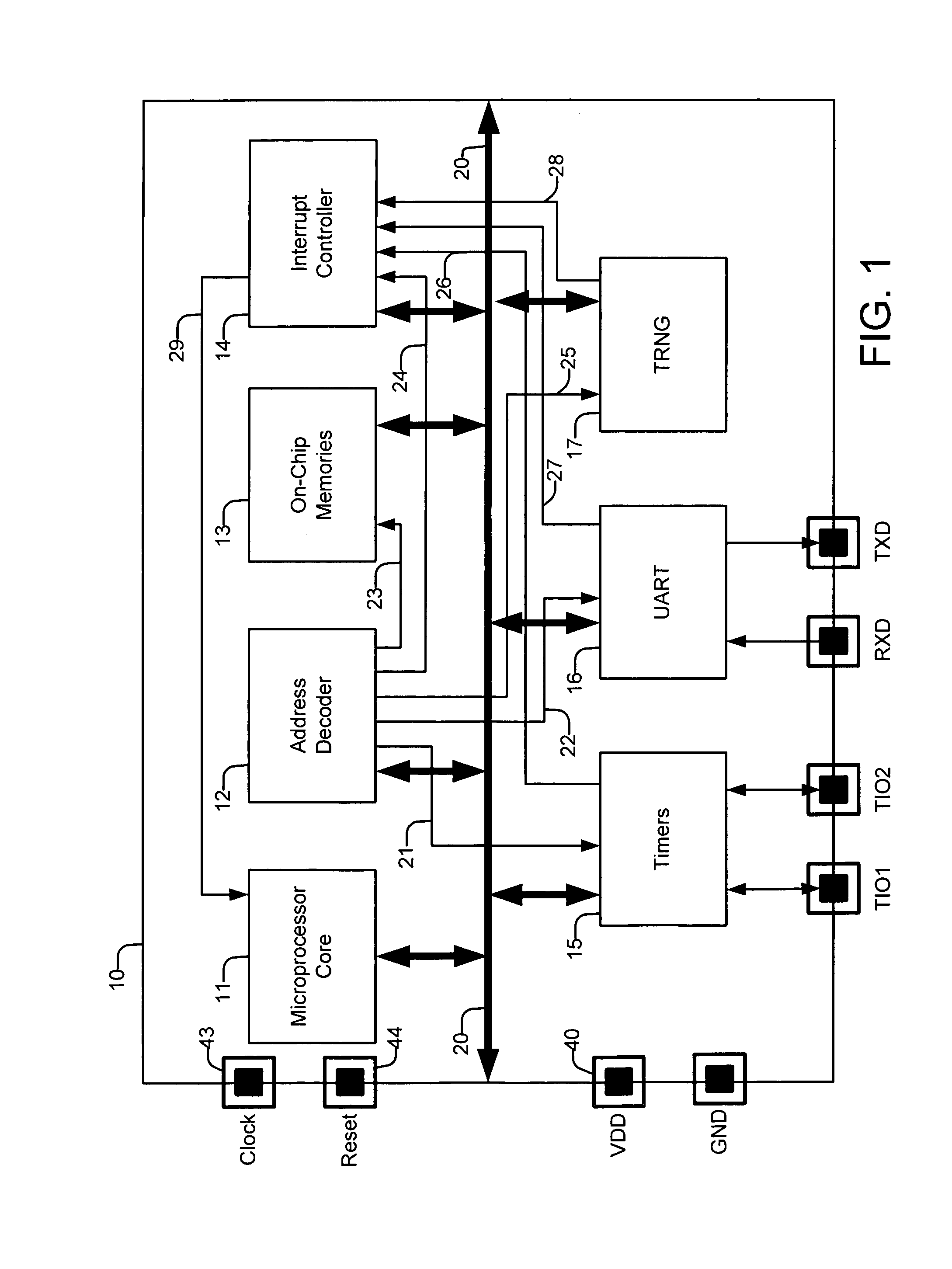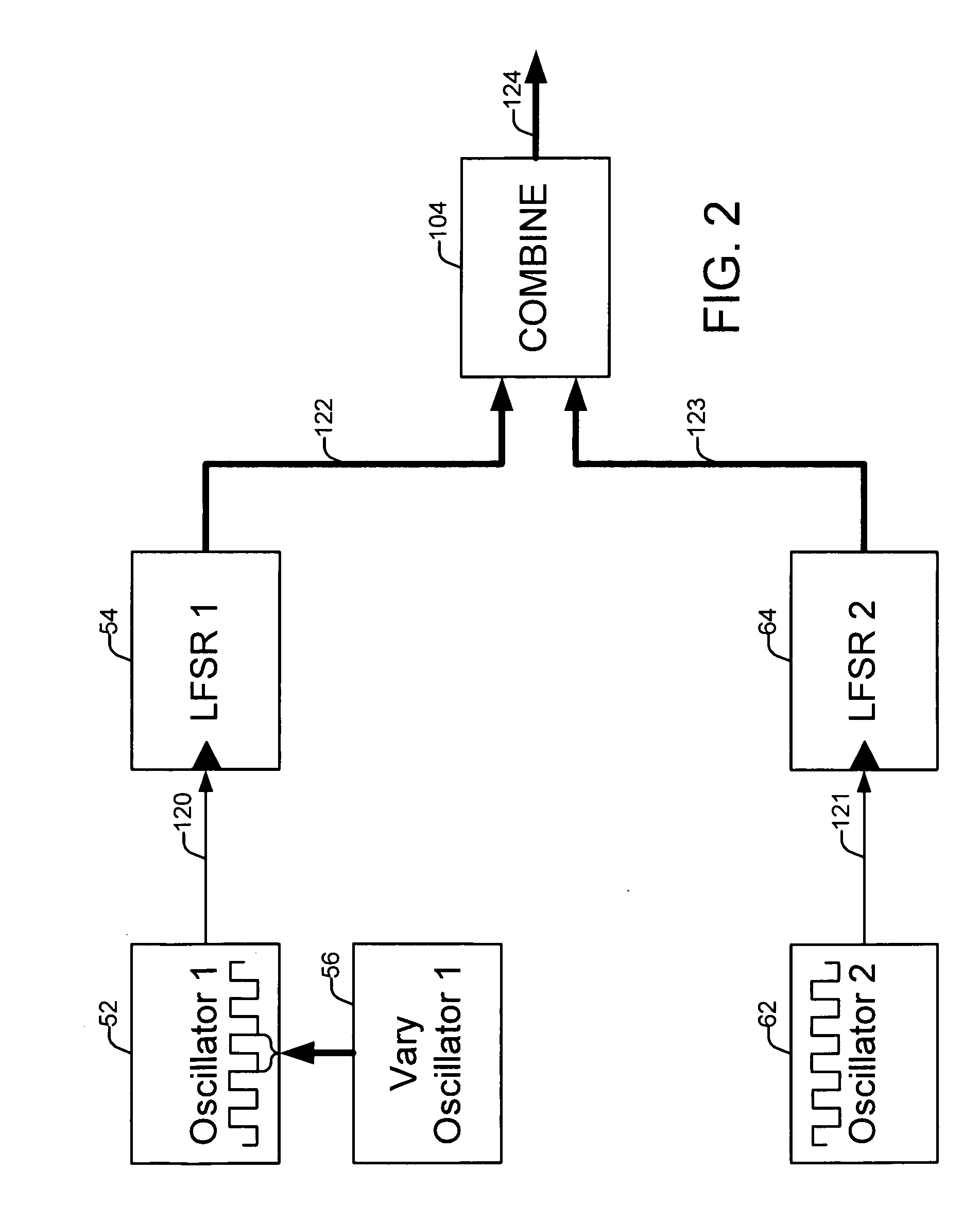True random number generator
a random number generator and circuit technology, applied in the field of circuits for generating true random numbers, can solve the problems of repeating patterns after only tens of thousands of trials, shortening the goal of library functions, and affecting the quality of random numbers
- Summary
- Abstract
- Description
- Claims
- Application Information
AI Technical Summary
Benefits of technology
Problems solved by technology
Method used
Image
Examples
first embodiment
[0027]FIG. 2 is a drawing showing an example of a true random number generator (“TRNG”), in accordance with the present invention. In this example, a pair of oscillators 52, 62 or clock generators are shown, with each oscillator 52, 62 coupled to and providing a single bit stream signal as a clock signal 120, 121 to a Linear Feedback Shift Register (LFSR) 54, 64, respectively. Generally, the two LFSR polynomials (see FIG. 12 below) are different for the two LFSRs 54, 64, including potentially different high order terms and “taps”. In this embodiment, the first oscillator 52 is a variable frequency oscillator (“VFO”) providing a numerically controlled or varied frequency output clock signal 120, dependent upon input select signal(s) 422, 423 (see FIG. 13), while the second oscillator is a fixed frequency oscillator (“FFO”) 62 providing a fixed frequency output clock signal 121. An example of a variable frequency oscillator (“VFO”) is a variable frequency ring oscillator (“VFRO”), an ...
second embodiment
[0031]FIG. 3 is a drawing showing an example of a true random number generator (“TRNG”), in accordance with the present invention. This example is similar to the embodiment shown in FIG. 2, except that the second oscillator 62 is a variable frequency oscillator which is responsively coupled to and whose frequency is controlled or modified by a means to vary the second oscillator frequency 66. As with the means to vary the of the first oscillator 52 frequency 56 in FIG. 2, various such means to vary the second oscillator frequency 56 are shown in subsequent FIGs. and embodiments.
third embodiment
[0032]FIG. 4 is a drawing showing an example of a true random number generator (“TRNG”), in accordance with the present invention. This example is similar to the embodiment shown in FIG. 2, except that the means to vary the first oscillator 52 frequency 56 is responsively coupled to output signals 122 from the first LFSR 54 in order to provide pseudorandom variation of the first oscillator 52 frequency.
PUM
 Login to View More
Login to View More Abstract
Description
Claims
Application Information
 Login to View More
Login to View More - R&D
- Intellectual Property
- Life Sciences
- Materials
- Tech Scout
- Unparalleled Data Quality
- Higher Quality Content
- 60% Fewer Hallucinations
Browse by: Latest US Patents, China's latest patents, Technical Efficacy Thesaurus, Application Domain, Technology Topic, Popular Technical Reports.
© 2025 PatSnap. All rights reserved.Legal|Privacy policy|Modern Slavery Act Transparency Statement|Sitemap|About US| Contact US: help@patsnap.com



